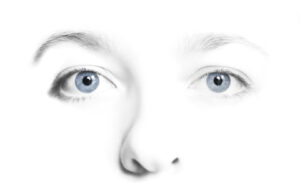
Combining Hypnotherapy and Cognitive Behavioral Therapy
Many people suffer from anxiety, depression, and other mental health issues, but traditional treatments like medication and talk therapy don’t always bring the desired results. Combining hypnotherapy and cognitive behavioral therapy has advantages. What if there was a way to treat mental health issues using a combination of two powerful therapies?
The mental health field has seen a surge in recent years as more people seek help for issues like depression, anxiety, and obsessive-compulsive disorder. Traditional treatments such as talk therapy and medications have been used to treat these conditions, but many people do not find relief from these methods. This is why researchers have begun to explore the possibility of combining hypnotherapy with cognitive behavioral therapy (CBT) to create a more effective treatment for mental health issues.
This article will explore the potential benefits of combining hypnotherapy and CBT, as well as the potential drawbacks. It will look at how hypnosis and CBT can be used together to effectively address mental health issues, and what the current research says about their efficacy. Finally, it will discuss the potential of combining hypnotherapy with other forms of psychotherapy, such as Dialectical Behavior Therapy (DBT) and Acceptance and Commitment Therapy (ACT), in order to create a more comprehensive and effective treatment plan.
1. Overview Of Hypnotherapy
Hypnotherapy is a form of psychotherapy that uses hypnosis, or the process of inducing a deep state of relaxation and concentration, to help the patient access the subconscious mind. During hypnotherapy, a patient is guided into a trance-like state, allowing them to focus their attention and become more open to suggestion. While in this relaxed state, the hypnotherapist works with the patient to identify and address negative thought patterns or behaviors that may be contributing to their emotional distress. Hypnotherapy can be used to treat a variety of mental health issues, such as anxiety, depression, PTSD, and addiction.
In hypnotherapy, the patient is typically in a very relaxed state and more open to suggestion, allowing the hypnotherapist to more effectively address the root cause of their emotional distress. The hypnotherapist may use techniques such as guided imagery, affirmations, and visualizations to help the patient achieve a more positive outlook or to unlearn behaviors that are causing them distress. The hypnotherapist may also suggest new behaviors that the patient can practice to help them manage their emotional distress.
Hypnotherapy also focuses on providing the patient with coping skills and strategies that they can use to manage their emotional distress outside of the therapeutic setting. This may include teaching the patient relaxation techniques, stress management, and mindfulness. These strategies are meant to help the patient become more aware of their thoughts and feelings and to better manage their emotional distress.
Overall, hypnotherapy is a powerful and effective therapeutic tool that can help patients address the underlying cause of their emotional distress. By helping the patient identify and address negative thought patterns and behaviors, hypnotherapy can help the patient achieve a more positive outlook and better manage their emotional distress.
2. Overview Of Cognitive Behavioral Therapy
Cognitive Behavioral Therapy (CBT) is a form of psychotherapy that focuses on changing negative patterns of thinking and behavior in order to address mental health issues. CBT is rooted in the idea that our thoughts, feelings, and behaviors are all interconnected and that changing one can help to change the others. The goal of CBT is to help individuals gain insight into their current patterns and to learn new, healthier ways of responding to their environment.
CBT is an evidence-based form of therapy that has been found to be effective in treating a wide range of mental health issues, including depression, anxiety, substance abuse, and eating disorders. It is based on the idea that our thoughts, feelings, and behaviors are all interconnected and that changing one can help to change the others. CBT utilizes a variety of techniques, such as cognitive restructuring, exposure therapy, relaxation techniques, and problem-solving strategies, to help individuals identify and modify maladaptive patterns of thinking and behavior.
CBT is typically conducted in a structured, goal-oriented manner. Sessions involve working with the therapist to identify and challenge negative thoughts and beliefs, as well as practice new, healthier behaviors. The therapist will work with the individual to set realistic goals, and sessions are often structured around the goals.
CBT is a relatively short-term form of therapy that can be completed in as little as 8-10 weeks. It is a highly effective form of therapy that can lead to lasting changes in thinking and behavior.
3. Benefits Of Combining Hypnotherapy And Cbt
- Combining hypnotherapy and cognitive behavioral therapy (CBT) has several potential benefits for individuals seeking treatment for mental health issues. Hypnotherapy is a form of psychotherapy in which the patient is guided into a state of deep relaxation, in order to make them more receptive to suggestion and open to positive changes. CBT is a form of psychotherapy used to help individuals identify and challenge distorted thinking patterns, as well as to develop effective coping strategies for dealing with anxiety and stress. Together, these therapies can create a powerful combination for improving mental health.
- One of the main benefits of combining hypnotherapy and CBT is that it can help individuals make long-lasting changes in their thought patterns and behaviors. CBT is focused on helping individuals recognize and challenge irrational thoughts, while hypnotherapy can help promote positive behavior changes by making suggestions in a relaxed state. By combining the two therapies, individuals can learn to identify and challenge irrational thoughts while also reinforcing positive behaviors and thought patterns.
- Another benefit of combining hypnotherapy and CBT is that it can help individuals reduce stress and anxiety. Hypnotherapy can help individuals relax by focusing on deep breathing and visualization, while CBT can help individuals develop coping strategies for managing stress and anxiety. By combining the two therapies, individuals can learn to manage stress and anxiety more effectively, and can create a more positive mindset.
- Finally, combining hypnotherapy and CBT can help individuals build self-confidence and self-esteem. Hypnotherapy can help individuals develop a more positive self-image, while CBT can help individuals learn to recognize and challenge irrational thoughts that may be contributing to low self-esteem. By combining the two therapies, individuals can learn to think more positively about themselves and build self-confidence.
4. Common Techniques Used In Combining Hypnotherapy And CBT
The combination of hypnotherapy and cognitive behavioral therapy (CBT) is becoming increasingly popular in the mental health field. This combination of therapies has been used to treat a range of psychological issues, such as trauma, anxiety, depression, and addiction. By combining the tools of hypnosis and CBT, the therapist can help the client make changes to the way they think and respond to situations. Below are four common techniques used in combining hypnotherapy and CBT.
The first technique is using hypnotic suggestions to help the client modify their behavior. In hypnosis, the therapist will suggest certain actions or words that will be taken to change behaviors or reduce symptoms. For example, the therapist might suggest that the client take deep breaths when they feel anxious, or that they repeat positive affirmations to themselves. This can help the client to create healthier habits and responses when faced with challenging situations.
The second technique is using cognitive restructuring to help the client challenge and change negative thought patterns. Cognitive restructuring is a core component of CBT and involves helping the client to identify and reframe their thoughts in a more positive way. The therapist will work with the client to identify any irrational or unhelpful thoughts that are contributing to the problem and then help the client to challenge and replace these with more helpful and realistic thoughts.
The third technique is to use cognitive reframing to help the client change their perspective on past events. Cognitive reframing is a technique used to help the client look at past events from a different perspective. This involves helping the client to gain insight into how their past experiences have contributed to their current problems. The therapist will also work with the client to explore how they can choose to interpret events in a more balanced and helpful way.
The fourth technique is to use hypnotic imagery to help the client create positive
5. Potential Areas Of Application For Combining Hypnotherapy And CBT
Anxiety Disorders:
Combining hypnotherapy and CBT could be beneficial for individuals with anxiety disorders, such as generalized anxiety disorder or social anxiety disorder. Hypnosis could help reduce the physiological symptoms of anxiety, such as increased heart rate, shallow breathing, and muscle tension. Cognitive-behavioral interventions could then be used to challenge and modify the negative thoughts and beliefs that are maintaining the anxiety disorder.
Substance Abuse Treatment:
Hypnotherapy and CBT can be used to help people who struggle with substance use disorder. Hypnosis can help reduce cravings, while CBT can be used to identify and modify the thoughts and behaviors that are maintaining the addiction. It can also be used to help people develop coping strategies for dealing with cravings and stressors that often lead to relapse.
Post-Traumatic Stress Disorder:
Combining hypnotherapy and CBT can be effective in treating post-traumatic stress disorder (PTSD). Hypnosis can help to reduce the physiological symptoms of PTSD, such as hyperarousal, while CBT can be used to identify and modify the negative thoughts and beliefs that are maintaining the disorder.
Eating Disorders:
Hypnotherapy and CBT can be used to help individuals with eating disorders, such as anorexia or bulimia. Hypnosis can be used to address the underlying psychological issues that are driving the disordered eating behaviors. CBT can then be used to identify and modify the negative thoughts and behaviors that are maintaining the disorder.
Chronic Pain:
Combining hypnotherapy and CBT can be beneficial for individuals who struggle with chronic pain. Hypnosis can be used to reduce the physiological symptoms of pain, while CBT can be used to identify and modify the negative thoughts and beliefs that are maintaining the pain. It can also be
6. Considerations When Combining Hypnotherapy And CBT
When combining hypnotherapy and cognitive behavioral therapy (CBT), there are several considerations that must be taken into account. First, it is important to ensure that both therapists understand the different techniques used in each approach and how they can be used to complement each other. It is also important for both therapists to be aware of the client’s individual needs and preferences when determining how to best combine the two approaches.
Second, it is important to create a safe and comfortable environment for both the client and the therapists. This involves creating a non-judgmental and supportive atmosphere where the client can feel free to express themselves and explore the different techniques. It is also important to discuss the goals and expectations of the treatment, as well as any potential risks and benefits of combining the two approaches.
Third, it is important to ensure that the client is comfortable with both approaches and is fully informed of any risks associated with hypnotherapy. It is also important to provide a structured process so that the client can understand the flow of the treatment and have a clear understanding of the different techniques used.
Finally, it is important to monitor and evaluate the progress of the treatment. This involves tracking the client’s progress, assessing any changes in their behavior, and making necessary adjustments to the treatment plan. By doing this, the therapists can ensure that the client is getting the most out of the combined treatment.
7. Limitations Of Combining Hypnotherapy And CBT
The combination of Hypnotherapy and Cognitive Behavioral Therapy (CBT) has become increasingly popular in recent years as a treatment option for various psychological issues. However, this approach is not without its limitations.
Firstly, the success of combining the two therapies is dependent on the patient’s ability to be hypnotized. Not all individuals are able to be hypnotized, and those that are may not respond to the same degree as others. Therefore, the effectiveness of combining Hypnotherapy and CBT may be limited for some patients.
Secondly, the skills and experience of the therapist also play an important role in the success of this approach. Not all therapists are equally well-versed in both Hypnotherapy and CBT, and the quality of the therapy may suffer if the therapist is not adequately trained or experienced in both approaches.
Thirdly, combining Hypnotherapy and CBT may not be suitable for all psychological disorders. Some disorders may require an approach that is more focused on one of the therapies, and the combination of the two may not be the most effective treatment.
Finally, this approach may not be suitable for all individuals. Some may find the combination of Hypnotherapy and CBT too overwhelming or uncomfortable, in which case a different approach may be more appropriate.
Overall, combining Hypnotherapy and CBT can be an effective approach to treating various psychological issues, but it is not without its limitations. It is important to consider these limitations before embarking on this approach to psychological treatment.
8. How To Find A Qualified Provider Of Combining Hypnotherapy And CBT
Finding a qualified provider of combining hypnotherapy and cognitive behavioral therapy (CBT) can be a daunting task. It is important to choose a provider who is experienced and knowledgeable in the treatment of psychological and emotional difficulties. Visit Bohol Hypnosis Expert
Frequently Asked Questions
What Is The Aim Of Combining Hypnotherapy And Cognitive Behavioral Therapy?
The aim of combining hypnotherapy and cognitive behavioral therapy (CBT) is to help individuals to harness the power of their subconscious mind in order to overcome their psychological issues and develop healthier coping strategies. This combination of therapies is often used to treat issues such as depression, anxiety, trauma, and addiction.
Hypnotherapy works by tapping into the power of the subconscious mind. By using techniques such as guided imagery and visualization, it helps to break through the barriers of the conscious mind and allow the patient to access their true feelings and thoughts. Through this process, patients can gain insight into their underlying issues and learn how to address them in a more effective manner.
CBT, on the other hand, focuses on tackling psychological issues through cognitive restructuring. This involves challenging and changing negative thought patterns and behaviors in order to develop healthier coping strategies. By combining hypnotherapy and CBT, individuals can work to uncover the root cause of their issues, while also developing more helpful ways of thinking and acting.
The ultimate goal of combining hypnotherapy and CBT is to help individuals become more aware of their thoughts and feelings, and develop better ways of managing them. By helping individuals to gain an understanding of their psychological issues and learn healthier coping strategies, this combined approach to therapy can be extremely beneficial.
What Conditions Can Be Treated Using This Approach?
Combining hypnotherapy and cognitive behavioral therapy (CBT) is an effective approach to treatment for a variety of mental health issues. This approach has been used to help people with depression, anxiety, phobias, insomnia, and post-traumatic stress disorder (PTSD).
Depression and anxiety can be effectively treated using a combination of hypnotherapy and CBT. Hypnotherapy can be used to help individuals identify and work through the underlying feelings that cause these conditions. It can also be used to help individuals work through the physical symptoms of depression and anxiety, such as panic attacks and agitation.
CBT can be used to help individuals identify and modify dysfunctional thought patterns and behavior that can lead to depression and anxiety. This can include techniques such as cognitive restructuring, problem solving, and relaxation techniques.
Phobias and PTSD can also be treated using a combination of hypnotherapy and CBT. Hypnotherapy can be used to help individuals confront the source of their fear and work through the feelings associated with the fear. It can also be used to help individuals visualize positive outcomes and create an internal environment of safety and security.
CBT can be used to help individuals identify and modify their beliefs and behaviors surrounding the phobia or traumatic event. It can also be used to help individuals cope with their symptoms and develop effective strategies for managing their fear and anxiety.
Overall, combining hypnotherapy and CBT is an effective approach to treating a variety of mental health conditions, including depression, anxiety, phobias, insomnia, and PTSD. This approach can be used to help individuals identify and work through the underlying feelings and beliefs that can lead to these conditions, as well as to develop effective strategies for managing their symptoms.
What Are The Benefits Of This Combination?
The combination of Hypnotherapy and Cognitive Behavioral Therapy (CBT) has become increasingly popular in recent years, as it combines the powerful techniques of both therapies to provide clients with a comprehensive and holistic treatment plan. The combination of Hypnotherapy and CBT can be used to help clients overcome a variety of issues, such as anxiety, depression, trauma, and substance abuse.
One of the primary benefits of combining Hypnotherapy and CBT is that it can help individuals achieve a deeper level of relaxation, which can be beneficial for those who are struggling with stress, anxiety, and depression. Hypnotherapy works by guiding clients into a relaxed, trance-like state, which can help to reduce stress levels and allow clients to gain access to their subconscious mind and explore the root causes of their issues. CBT, on the other hand, can be used to identify and challenge negative thought patterns, which can reduce feelings of anxiety and depression. By combining these two therapies, clients can access the deeper layers of their subconscious mind while also gaining insight into the underlying causes of their issues.
Another benefit of combining Hypnotherapy and CBT is that it can help clients to develop better coping skills. Hypnotherapy can help clients to develop skills such as relaxation, positive visualization, and self-hypnosis, which can be used to manage stress and anxiety. CBT, on the other hand, can be used to explore the underlying causes of issues and equip clients with new coping strategies to help them manage their symptoms. By combining these two therapies, clients can gain access to a range of different tools and strategies to help them better manage their issues.
Finally, combining Hypnotherapy and CBT can help clients to achieve lasting change. Hypnotherapy can help clients to access the deeper layers of their subconscious mind, which can be beneficial for dealing
What Is The Difference Between Hypnotherapy And Cognitive Behavioral Therapy?
Hypnotherapy and Cognitive Behavioral Therapy (CBT) are both forms of psychotherapy, but they differ in some important ways. Hypnotherapy is a form of psychotherapy that uses hypnosis to help people change their behavior or alleviate certain symptoms, such as pain or anxiety. CBT is a form of psychotherapy that focuses on changing thoughts and behaviors in order to reduce or eliminate certain symptoms or behaviors.
Hypnotherapy works by helping the patient to enter a deeper state of relaxation and to focus on certain ideas or images in order to make a desired change. This can involve the patient being guided through a series of mental images and suggestions, or being asked to recall past experiences in order to bring about a desired change. Hypnotherapy is typically used to treat issues such as anxiety, depression, phobias, and addictions.
CBT, on the other hand, focuses on changing the patient’s thought patterns and behaviors in order to reduce or eliminate certain symptoms or behaviors. CBT is based on the idea that our thoughts and behaviors can have a direct effect on our mental and physical health. It involves working with the patient to identify and challenge any negative thoughts or beliefs that they may have and to replace them with more positive and helpful ones. CBT has been proven to be effective in treating a wide range of mental health issues, including depression, anxiety, and stress.
Overall, both hypnotherapy and CBT can be effective in helping people to make changes in their lives and to improve their mental and physical health. However, the two approaches differ in the techniques used and the focus of the therapy. As such, it is important to discuss the best option with a therapist or mental health professional in order to determine which approach is best for the individual.
How Long Does It Take To See Results?
The amount of time it takes to see results from combining hypnotherapy and cognitive behavioral therapy (CBT) can vary greatly depending on a variety of factors. Generally, it is safe to say that results will begin to show after the first few sessions. However, the timeline for results can vary significantly depending on the individual, the severity of the issue being addressed, and the frequency of sessions.
For instance, if an individual is dealing with mild anxiety, it may take a few sessions to get to the root of the issue and start to develop new coping strategies. On the other hand, if an individual is dealing with a more severe issue, such as a phobia, it may take more time before they start to see real results. In addition, if an individual is attending sessions on a weekly or biweekly basis, they may see results faster than if they are only attending once a month.
The best way to ensure results are seen in a timely manner is to make sure that the individual is committed to the process. This means that they should attend all of their sessions and make sure to practice the techniques and strategies they learn in between sessions. It is also important to make sure that the individual is having honest and open conversations with their therapist, so that any issues can be addressed in a timely manner.
Overall, the amount of time it takes to see results from combining hypnotherapy and CBT can vary significantly depending on the individual and the severity of the issue. However, with commitment and dedication to the process, most individuals can start to see results within the first few sessions.
How Do I Know If This Approach Is Right For Me?
If you are considering combining Hypnotherapy and Cognitive Behavioral Therapy (CBT) to address a mental health issue, it is important to understand the benefits and risks of this approach before making a decision. Knowing if the approach is right for you can be difficult, so it is important to consult a mental health professional to discuss the best options for your individual needs.
Hypnotherapy is an altered state of consciousness characterized by increased suggestibility and relaxation, while CBT is a psychotherapeutic approach that focuses on helping individuals identify and modify their distorted, unhelpful thoughts and behaviors. Combining the two therapies is thought to be beneficial because hypnotherapy can help to access unconscious material, while CBT can help to challenge and modify it.
When deciding if this approach is right for you, it is important to understand the potential benefits and risks. The combination of hypnotherapy and CBT can be particularly useful in treating anxiety, phobias, depression, and other mental health issues. It can also have the added benefits of helping to increase self-awareness and providing coping strategies for dealing with stress. However, there is also the risk of worsening symptoms if the approach is not tailored to your individual needs.
Ultimately, the decision of whether or not to combine hypnotherapy and CBT is a personal one. It is important to speak with a mental health professional to discuss the potential benefits and risks, and to ensure that the approach is right for you.
Conclusion
In conclusion, the combination of hypnotherapy and cognitive behavioral therapy can be a powerful and effective means of addressing mental health issues such as depression, anxiety, and phobias. The combination of these techniques allows for a more comprehensive approach to therapy, which can lead to long-term relief from symptoms. By combining hypnotherapy and cognitive behavioral therapy, clients can benefit from the best of both worlds, allowing them to make lasting changes in their lives.
Contact Growth Enrichment Center for an Appointment
Do not be afraid to reach out to me, Mark E Wilkins, to assist you in any issues you might have. Most Hypnotherapy sessions last 2 hours and EFT Sessions are usually handled with one session. Life Coaching is 45 minute session, one a week.
To make an appointment, first listen to the Pre-talk and fill out he Complementary Healthcare Provider Disclosure. The use the Contact Form to request an appointment with the Bohol Hypnosis Expert.





